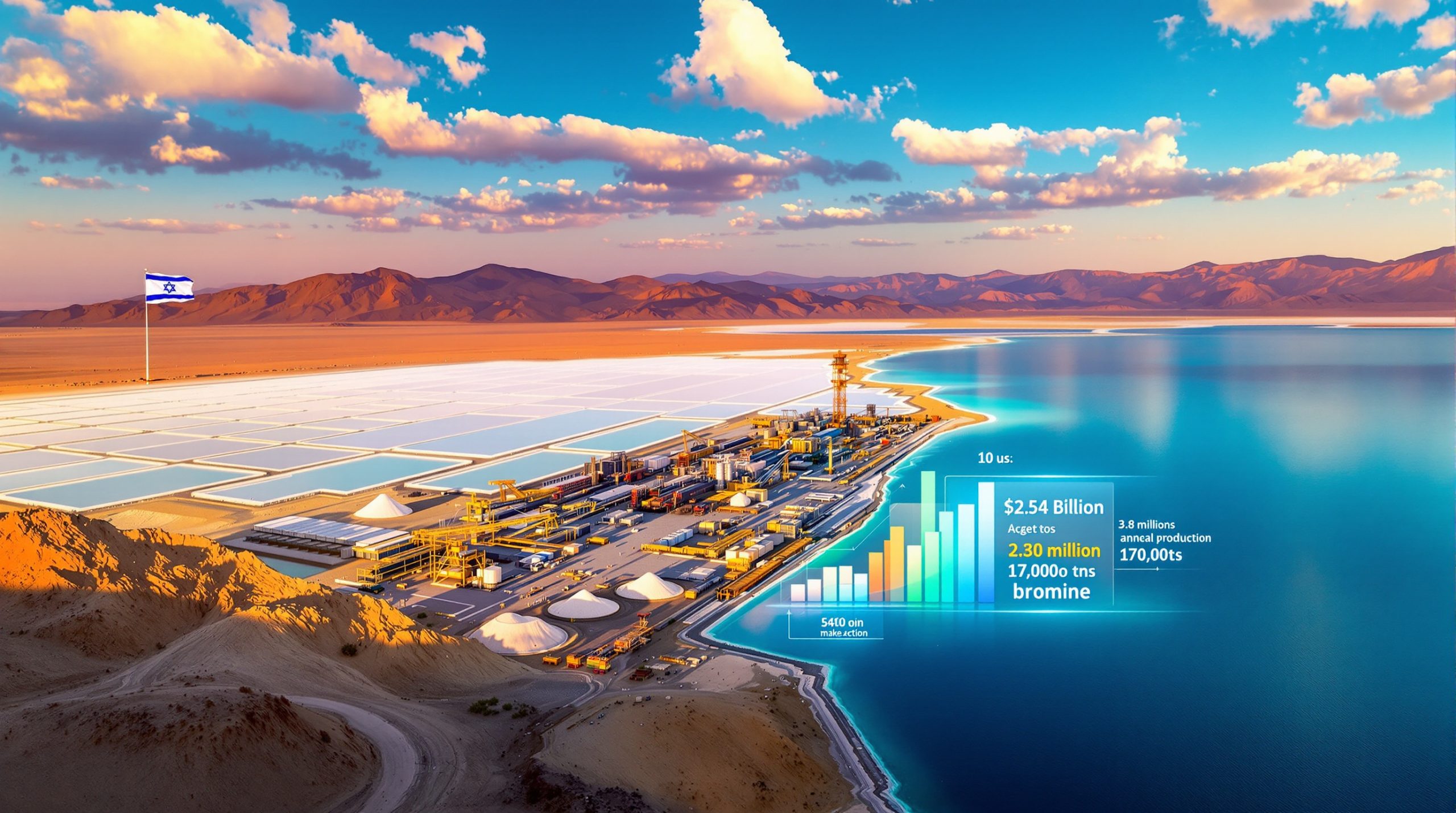What is Private 5G in Mining and Why Does It Matter?
Private 5G networks represent a transformative technology for mining operations, enabling unprecedented connectivity in remote and challenging environments. These dedicated networks operate on specific frequency bands allocated by governments specifically for industrial use, separate from public cellular networks.
Unlike public networks, private 5G leverages dedicated spectrum to provide mining companies with complete control over their connectivity infrastructure. This autonomy allows for customized coverage, enhanced security, and optimized performance tailored to the unique demands of mining operations.
The significance of private 5G in mining cannot be overstated. As the industry moves toward automation, remote operations, and data‐driven mining operations, the need for reliable, high-performance connectivity becomes critical. Private 5G networks serve as the foundation for this digital transformation in mining with private 5G networks, enabling technologies that increase safety, efficiency, and sustainability.
How Does Private 5G Compare to Traditional Mining Networks?
When compared to conventional connectivity solutions like Wi-Fi, LTE, or wired networks, private 5G offers several substantial advantages:
Higher bandwidth capacity enables mining operations to handle massive data streams from hundreds or thousands of sensors, high-definition cameras, and autonomous equipment simultaneously. This capacity supports data transfer rates up to 10 Gbps, far exceeding what was previously possible in remote mining locations.
Ultra-low latency provides response times as low as 1-10 milliseconds, essential for real-time control of remote and autonomous operations. This near-instantaneous communication is critical for applications like remote drilling, where even slight delays could result in equipment damage or safety hazards.
Enhanced security through isolated network infrastructure ensures that sensitive operational data remains protected. Private 5G networks can implement advanced encryption and authentication protocols, significantly reducing vulnerability to cyber threats compared to public networks.
Greater reliability in harsh mining environments where public networks are unavailable or unreliable. Private 5G can be engineered with redundant systems and robust equipment designed specifically for extreme conditions, ensuring continuous operation even in dust, vibration, and temperature extremes.
Customizable coverage tailored to specific operational areas including underground tunnels, open pits, and processing facilities. Network designers can place radio units strategically to eliminate dead zones and ensure consistent connectivity throughout the mining operation.
The Growing Market for Private 5G in Mining
The adoption of private 5G in mining is accelerating globally, driven by increasing digitalization demands and the need for reliable connectivity in remote locations. Industry analysts project that the private 5G market will grow from $2 billion in 2023 to $36 billion by 2030, representing an extraordinary 51% compound annual growth rate (CAGR).
This remarkable growth trajectory demonstrates strong market confidence in private 5G technology and justifies increased investment in the sector. Mining companies are recognizing that investing in dedicated connectivity infrastructure provides a competitive advantage through improved operational efficiency and safety.
What's Driving Private 5G Adoption in Mining?
Several factors are accelerating the adoption of private 5G networks across the mining sector:
Regulatory support has increased significantly, with governments worldwide allocating specific frequencies for private industrial networks. This policy shift recognizes the importance of dedicated spectrum for critical industries like mining and manufacturing.
Dedicated spectrum bands are now available in key mining regions, making deployment more straightforward. These include the United States (CBRS band n48), Germany (3.7-3.8 GHz band n77), Australia (3.7-3.8 GHz band n77), Japan (4.5 GHz band n79), South Korea (4.7 GHz band n79), and Taiwan (4.8-4.9 GHz band n79).
Digital transformation initiatives are becoming central to mining strategies, with companies seeking to leverage automation, AI in mining operations, and IoT to increase productivity and reduce costs. Private 5G provides the connectivity foundation necessary for these advanced technologies.
Safety requirements are increasingly stringent, driving the need for real-time monitoring and communication systems that can function reliably in hazardous environments. Private 5G enables comprehensive safety systems that protect workers and assets.
Sustainability goals in mining require more precise control of operations, which is facilitated by the advanced monitoring and automation capabilities enabled by private 5G networks.
How is Private 5G Transforming Mining Operations?
The integration of private 5G networks is fundamentally changing how mining operations function, enabling a level of automation, monitoring, and control previously impossible in remote and challenging environments.
What Applications Are Enabled by Private 5G in Mining?
Private 5G networks support numerous critical applications that enhance mining efficiency, safety, and productivity:
Autonomous haulage systems allow driverless mining trucks to operate continuously, improving productivity while removing personnel from potentially dangerous environments. These systems require constant, reliable communication for safe operation, which private 5G provides.
Remote-controlled drilling rigs and heavy machinery enable operators to work from comfortable control rooms rather than in hazardous, dusty, or noisy environments. The high bandwidth and low latency of private 5G ensure operators have the real-time feedback needed for precise control.
Robotic inspection units can navigate hazardous areas or confined spaces, streaming high-definition video and sensor data back to safety engineers. These applications depend on reliable connectivity that traditional networks cannot consistently provide.
Real-time conveyor monitoring systems use vibration sensors and cameras to detect potential failures before they cause costly downtime. Private 5G networks can handle the continuous data streams from these monitoring systems.
Gas sensor data streaming enables immediate detection of hazardous gas buildup, triggering automatic ventilation systems or evacuations when necessary. This real-time monitoring is crucial for underground safety.
Worker safety alarm systems connected through private 5G provide immediate notification of emergencies, location tracking, and health monitoring for personnel in hazardous areas.
Automated environmental monitoring helps mining operations maintain compliance with regulations and reduce their ecological footprint through precise measurement of water quality, dust levels, and other environmental factors.
High-definition video surveillance provides comprehensive security and operational oversight, with hundreds of cameras streaming simultaneously without bandwidth constraints.
How Does Private 5G Support Autonomous Mining?
Autonomous mining represents one of the most transformative applications of private 5G technology. The ultra-reliable low-latency communication (URLLC) capabilities of 5G are particularly valuable for these operations:
Millisecond response times enable real-time control of autonomous equipment, allowing systems to react instantly to changing conditions or potential hazards. This low latency is essential for the safety and efficiency of autonomous operations.
Massive machine-type communications (mMTC) support thousands of connected sensors across mining sites, providing comprehensive data for autonomous systems to make informed decisions. A single autonomous haul truck may incorporate dozens of sensors, all requiring reliable connectivity.
Enhanced mobile broadband (eMBB) delivers high-definition video feeds from remote operations, giving supervisors and engineers clear visibility into autonomous processes. This visual data is crucial for monitoring and troubleshooting.
Network slicing technology allows operators to prioritize critical applications like safety systems and autonomous vehicle control, ensuring these functions receive guaranteed bandwidth and latency even during network congestion.
By integrating these capabilities, private 5G networks provide the foundation for fully autonomous mining operations that can function continuously with minimal human intervention, dramatically improving productivity and safety.
What Technical Considerations Matter for Mining Deployments?
Implementing private 5G in mining environments presents unique technical challenges that require specialized solutions. The harsh conditions, remote locations, and critical nature of mining operations demand careful consideration of hardware and infrastructure requirements.
What Hardware Requirements Are Unique to Mining Environments?
Mining operations present unique challenges that demand specialized equipment:
Ruggedized hardware capable of withstanding dust, vibration, and extreme temperatures is essential for mining deployments. Equipment must meet IP67 or higher ratings for dust and water resistance, with operating temperature ranges typically from -40°C to +75°C to handle both arctic and desert mining conditions.
Energy-efficient designs are crucial for remote operations with limited power infrastructure. Many mining sites rely on generators or renewable energy sources with capacity constraints, making power consumption a key consideration for network equipment.
Compact form factors suitable for installation in tight spaces allow for deployment in underground tunnels, on mobile equipment, or in crowded control rooms. Equipment size and weight also impact installation costs and feasibility.
Intrinsically safe certification is required for hardware deployed in hazardous environments where explosive gases or dust may be present. This certification ensures equipment cannot generate sparks or heat sufficient to cause ignition.
Redundant connectivity options ensure operational continuity even if primary systems fail. Many mining electrification trends are enabling 5G deployments to incorporate satellite backhaul, microwave links, or fiber connections as redundant paths to maintain critical communications.
What Network Infrastructure Components Are Required?
Implementing a private 5G network requires several key components working together as an integrated system:
Central Units (CUs) handle core network processing, including user authentication, session management, and routing. These units typically reside in secure, climate-controlled environments such as central data centers.
Distributed Units (DUs) manage radio resources and time-sensitive processing closer to network edges. In mining operations, DUs may be deployed in hardened enclosures near operational areas to reduce latency.
Radio Units (RUs) provide the wireless signal transmission and reception, and must be strategically placed throughout the mining site to ensure comprehensive coverage. Underground deployments often require specialized radio units designed for tunnel environments.
Open Radio Access Network (ORAN) architecture allows for vendor flexibility and component interoperability, reducing dependency on single suppliers and potentially lowering costs through competition.
Edge computing resources enable local data processing for applications requiring immediate response times or those generating large data volumes that would be impractical to transmit to remote servers. These edge resources can analyze video streams, sensor data, and equipment telemetry locally.
Specialized cellular gateways like Moxa's CCG-1500 Series provide ruggedized connectivity options designed specifically for industrial environments, with features like dual SIM cards for carrier redundancy and advanced security protocols.
How to Implement Private 5G in Mining Operations
Successful implementation of private 5G in mining environments requires careful planning, thorough evaluation of requirements, and strategic deployment of resources. The process extends beyond simply installing hardware to encompass comprehensive network design, integration with existing systems, and ongoing management.
What Implementation Challenges Should Be Anticipated?
Deploying private 5G in mining environments presents several challenges that must be addressed:
Coverage planning for complex underground environments presents unique difficulties due to signal attenuation through rock and changing tunnel geometries. This requires sophisticated RF modeling and careful placement of radio units to ensure consistent connectivity throughout the mining operation.
Spectrum acquisition and regulatory compliance vary significantly by country and region. Mining companies must navigate complex licensing processes, which may include demonstrating non-interference with adjacent spectrum users and implementing specific security measures.
Integration with existing operational technology (OT) systems requires careful planning to ensure compatibility with legacy SCADA systems, PLCs, and other industrial control infrastructure. Protocol conversion and middleware solutions may be necessary to bridge these systems.
Cybersecurity considerations are particularly important for critical infrastructure like mining operations. Private 5G networks must implement comprehensive security frameworks including network segmentation, encryption, access control, and continuous monitoring for threats.
Skills gap in specialized networking expertise often necessitates partnerships with experienced system integrators or significant investment in training for internal teams. 5G technology requires different skill sets compared to traditional IT or OT environments.
Total cost of ownership calculations must account for not only initial deployment costs but also ongoing maintenance, spectrum licensing fees, power consumption, and eventual technology refreshes. The business case should quantify productivity improvements and safety benefits to justify investment.
What Steps Are Involved in Network Planning?
Successful private 5G implementation requires careful planning across multiple domains:
-
Site survey and RF planning are essential first steps to identify coverage requirements and potential obstacles. This typically involves both physical inspection and computer modeling to determine optimal placement of radio equipment.
-
Spectrum allocation must be secured through appropriate regulatory channels, which may involve application for mining exploration licences or coordination with national telecommunications authorities.
-
Infrastructure design includes considerations for power availability, climate control, physical security, and backhaul connectivity. Mining sites often require redundant power systems and multiple backhaul options to ensure reliability.
-
Equipment selection should be based on environmental requirements, performance needs, and long-term support availability. Choosing equipment from vendors with mining industry experience can reduce implementation risks.
-
Integration planning with existing systems helps ensure seamless operation with legacy technologies and prevents operational disruptions during deployment.
-
Security architecture development should follow defense-in-depth principles with multiple protective layers, from physical security of equipment to encryption of data in transit and at rest.
-
Testing and validation protocols should verify network performance under various load conditions and failure scenarios before full deployment.
-
Deployment and commissioning procedures need to minimize operational disruption, often requiring careful scheduling around production activities.
-
Ongoing monitoring and maintenance strategies ensure the network continues to meet performance requirements as mining industry trends evolve.
Future Trends in Mining Connectivity
As technology continues to advance, private 5G networks in mining will evolve to support increasingly sophisticated applications and use cases. Understanding emerging trends helps mining companies prepare for future opportunities and challenges.
How Will Private 5G Evolve in Mining?
The future of private 5G in mining will likely include several key developments:
Increased edge computing integration will bring real-time analytics capabilities directly to mining sites, enabling immediate processing of sensor data and video feeds without reliance on distant data centers. This edge processing will support faster decision-making and reduce bandwidth requirements for backhaul connections.
AI-enhanced network optimization will dynamically allocate resources based on operational priorities and predictive models of network demand. These systems will automatically adjust coverage patterns, bandwidth allocation, and processing resources to maintain optimal performance.
Expanded IoT ecosystem with millions of connected sensors will provide comprehensive monitoring of all aspects of mining operations, from equipment health to environmental conditions. Future networks will need to support device densities several orders of magnitude higher than today's implementations.
Advanced network slicing will create multiple virtual networks within the same physical infrastructure, each with guaranteed performance characteristics tailored to specific applications. Critical safety systems might receive absolute priority, while less time-sensitive data collection operates on separate slices.
Hybrid network architectures will combine private 5G with satellite connectivity, particularly low Earth orbit (LEO) constellations, to provide seamless coverage across even the most remote mining operations. This redundancy will ensure continuous connectivity regardless of local conditions.
Enhanced positioning capabilities will leverage 5G signals for centimeter-level location accuracy, enabling precise tracking of personnel and equipment throughout mining operations, including in areas where GPS signals cannot penetrate.
Energy harvesting technologies for self-powered network nodes will reduce dependence on wired power infrastructure, allowing deployment of sensors and small radio units in locations previously considered impractical due to power limitations.
What New Applications Will Emerge?
As private 5G networks mature, they will enable new applications that transform mining operations:
Digital twin integration will create complete virtual representations of mining operations, updated in real-time with data from the physical environment. These digital twins will enable sophisticated simulation and optimization of processes before implementation in the real world.
Augmented reality maintenance will allow technicians to receive real-time guidance from remote experts while working on complex equipment, reducing downtime and improving repair quality. The high bandwidth and low latency of 5G are essential for the smooth functioning of these AR applications.
Swarm robotics will coordinate autonomous operations across multiple machines working in concert, such as drilling, blasting, and material handling equipment operating as integrated teams rather than individual units.
Predictive maintenance systems with real-time equipment health monitoring will anticipate failures before they occur, scheduling maintenance during planned downtime rather than during production. These systems will analyze vibration patterns, thermal signatures, and other indicators to detect early signs of component wear.
Advanced ventilation on demand systems for energy efficiency will precisely control air flow in underground operations based on real-time air quality measurements and personnel locations, significantly reducing energy consumption while maintaining safety standards.
Comprehensive environmental monitoring networks will track air quality, water discharge, dust levels, and other environmental factors across the entire mining operation, ensuring regulatory compliance and supporting sustainability goals with precise measurement and control.
FAQ: Private 5G Networks in Mining
How does private 5G differ from public 5G networks?
Private 5G networks operate on dedicated spectrum allocated specifically for industrial use, providing enhanced security, reliability, and customization compared to public networks. They can be optimized for specific mining applications and aren't subject to the congestion or coverage limitations of public networks. Most importantly, mining companies maintain complete control over network configuration, security policies, and coverage prioritization.
What are the cost considerations for implementing private 5G?
The total cost of ownership includes spectrum licensing fees, infrastructure investment, deployment costs, and ongoing maintenance. While initial investment is significant, the operational benefits and efficiency gains typically deliver positive ROI through increased productivity, reduced downtime, and enhanced safety. Most mining operations can expect to see returns within 2-3 years of implementation, particularly when deployed as part of broader automation initiatives.
How does private 5G impact mining sustainability goals?
Private 5G networks enable more precise control of mining operations, reducing energy consumption through optimized equipment utilization, improved ventilation management, and more efficient transportation systems. These networks also support enhanced environmental monitoring for regulatory compliance and impact reduction. Autonomous operations enabled by 5G typically demonstrate 15-20% lower fuel consumption compared to manually operated equipment
Want to Capitalise on the Next Major Mineral Discovery?
Don't miss potentially transformative discoveries on the ASX with Discovery Alert's proprietary Discovery IQ model, which delivers real-time alerts on significant mineral announcements straight to your inbox. Visit our discoveries page to see why historic mineral discoveries can generate substantial returns, and begin your 30-day free trial today.




